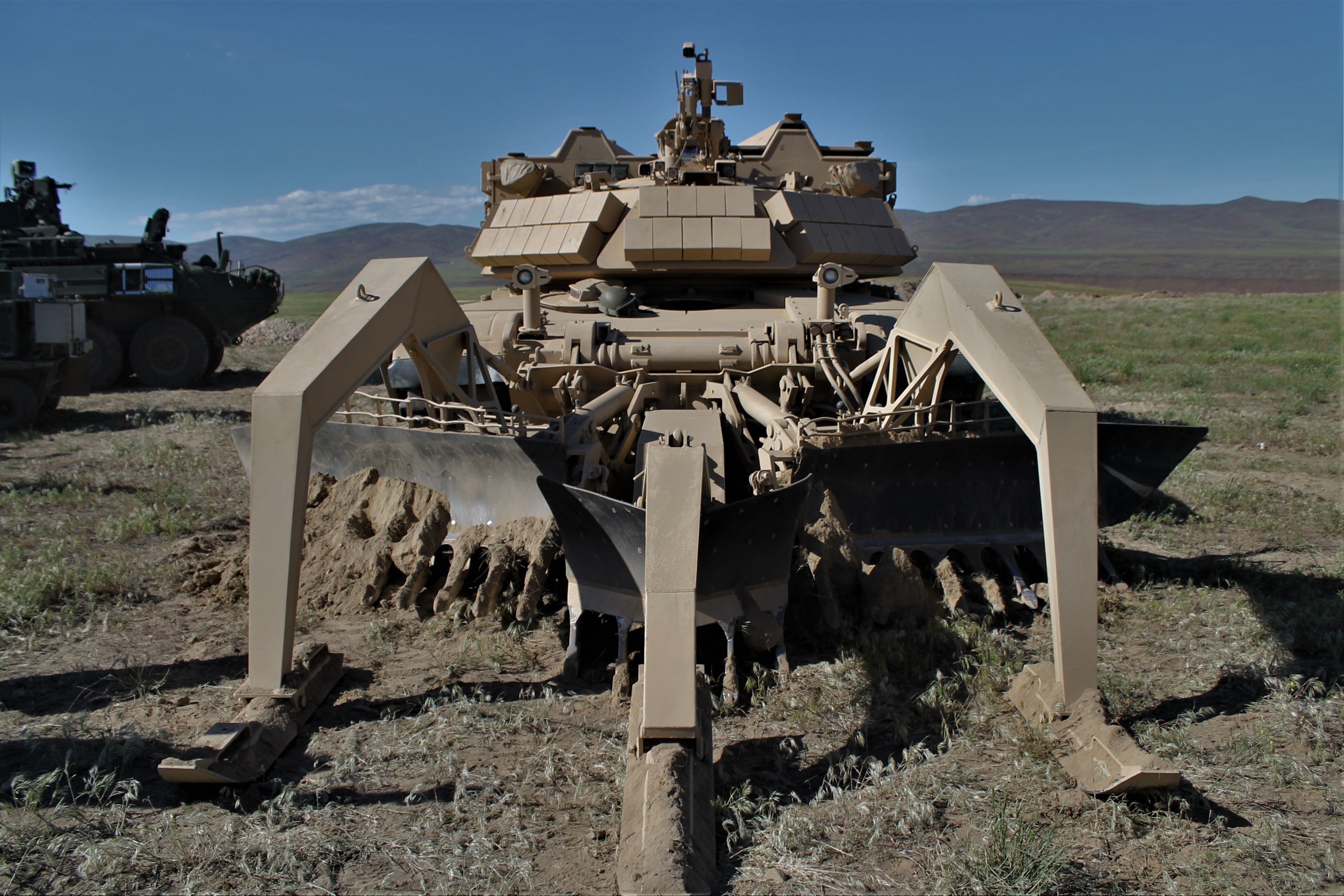WASHINGTON — The U.S. Army has selected General Dynamics Land Systems’ Multi-Utility Tactical Transport, or MUTT, for its Squad Multipurpose Equipment Transport unmanned ground system program of record.
The initial contract for the eight-wheel drive robotic vehicle totals $162.4 million and includes support hardware, user training and technical support. The contract will wrap up at the end of October 2024, according to an Oct. 30 Defense Department announcement.
GDLS will produce 624 systems for the Squad Multipurpose Equipment Transport, or SMET, program under the contract and will begin delivery in the second quarter of fiscal 2021, an Army spokesperson confirmed to Defense News.
Four companies were chosen at the end of 2017 to compete to build the robotic vehicle that will help troops carry equipment on the battlefield.
RELATED

A team of Applied Research Associates and Polaris Defense; General Dynamics Land Systems; HDT Expeditionary Systems and Howe & Howe were selected to build 20 platforms each that were issued to two infantry brigade combat teams for testing and analysis of utility in the field.
Polaris’ MRZR X was evaluated as well as HDT’s six-wheel drive Global Hunter WOLF, or Wheeled Offload Logistics Follower. Textron-owned Howe & Howe offered its Grizzly unmanned vehicle, which is powered by an electric engine.
HDT’s Global Hunter WOLF was recently picked, along with three other teams to include Textron and QinetiQ North America, to compete to build vehicles for the Robotic Combat Vehicle-Light effort.
The Army selected those teams from an array of companies chosen to participate in a demonstration event in the fall of 2017 at Fort Benning, Georgia. Other companies that participated in that demonstration included American Robot Company; Lockheed Martin; AM General; Robo-Team NA; and QinetiQ North America.
For the SMET program, the Army was looking for a vehicle that can carry about 1,000 pounds worth of soldier equipment. This equates to lightening the load of nine soldiers across an infantry squad. The Army wanted the robots to be able to travel 60 miles over three days and to be able to provide a spare kilowatt hour of power while moving and at least 3 kilowatt hours while stationary.
Jen Judson is an award-winning journalist covering land warfare for Defense News. She has also worked for Politico and Inside Defense. She holds a Master of Science degree in journalism from Boston University and a Bachelor of Arts degree from Kenyon College.







